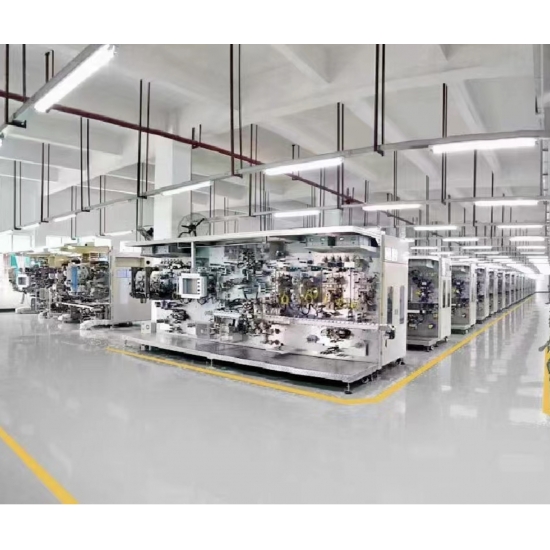Pouch Cell Manufacturing: A Guide to Flexible Battery Production
Pouch cell manufacturing involves creating lithium-ion battery cells in a soft, flexible casing, commonly known as "pouch cells." These cells have a lightweight, compact design and offer high energy density, making them ideal for applications in electric vehicles (EVs), consumer electronics, and portable power storage. The pouch cell format allows manufacturers to create batteries with custom shapes and sizes, providing enhanced design flexibility for various industries.
● Key Stages in Pouch Cell Production Line
1. Electrode Preparation
- Material Mixing: Active materials for the anode (typically graphite or silicon) and cathode (such as lithium nickel manganese cobalt oxide or LFP) are mixed with binders and conductive additives.
- Coating Process: The mixed electrode materials are uniformly coated onto metal foils (copper for the anode and aluminum for the cathode) using coating machines to achieve precise thickness and uniformity.
- Drying and Calendering: The coated electrodes are dried to remove solvents, then passed through a calendering machine to increase density, optimize thickness, and improve electrochemical performance.
2. Cell Stacking or Winding
- Stacking Process: In the stacking process, layers of anode, separator, and cathode are precisely stacked in sequence to form the cell structure. This is common for thicker pouch cells.
- Winding Process: For thinner pouch cells, the electrodes and separators may be wound together in a "jelly-roll" format to create a coiled structure within the pouch casing.
3. Electrolyte Filling
- Vacuum Injection: After the electrodes and separators are placed inside the pouch casing, the electrolyte solution is injected into the cell under vacuum to ensure it is thoroughly absorbed by the electrodes.
- Sealing: The open side of the pouch casing is then heat-sealed to prevent electrolyte leakage and provide a protective, airtight environment for the battery cell.
4. Formation Cycling and Aging
- Formation Process: The assembled cells are subjected to initial charge and discharge cycles to activate the electrochemical materials. This process stabilizes the battery and ensures consistency in performance.
- Aging and Testing: Cells are aged under controlled conditions for a specific time period to ensure they meet required performance and safety standards.
5. Final Sealing and Packaging
- Thermal Sealing: A final thermal sealing is applied to reinforce the cell and create a robust enclosure for the battery.
- Quality Control: Each cell undergoes a rigorous quality check for capacity, internal resistance, and overall structural integrity.
● Equipment Used in Pouch Cell Manufacturing
1. Coating Machines: Used to apply the active material slurry onto electrode foils with precise thickness control.
2. Calendering Machines: Compress the electrodes to ensure a uniform, high-density coating.
3. Cutting and Stacking Machines: Precisely cut and stack electrodes and separators for assembling the cells.
4. Vacuum Filling Machines: Inject electrolyte solution into cells under vacuum to avoid air bubbles.
5. Sealing Machines: Heat-seal the pouch casing, ensuring a secure, leak-proof enclosure for each cell.
● Advantages of Pouch Cell Manufacturing
1. High Energy Density: Pouch cells have a high energy-to-weight ratio, making them ideal for applications where space and weight are limited.
2. Flexible Form Factor: Pouch cells can be custom-made in various shapes and sizes, offering greater design flexibility for product manufacturers.
3. Cost Efficiency: The simplified packaging and efficient use of materials can reduce production costs compared to other battery formats.
4. Improved Safety: Although more sensitive to physical stress, pouch cells with proper design and sealing are highly resistant to thermal runaway and short circuits.
● Applications of Pouch Cells
- Electric Vehicles (EVs): Pouch cells are widely used in EV battery packs, offering high energy density and lightweight benefits.
- Consumer Electronics: Pouch cells are found in laptops, smartphones, tablets, and wearable technology due to their slim form and flexible size.
- Renewable Energy Storage: They are also used in solar and wind energy storage systems, where compact, high-capacity energy storage is required.
● Challenges and Considerations
1. Handling Sensitivity: Pouch cells are prone to swelling and damage from physical impact, so manufacturing and assembly require careful handling.
2. Temperature Management: Pouch cells may experience thermal expansion, which must be managed to avoid performance degradation and potential safety risks.
3. Quality Control: Consistent quality control is essential to ensure safety and reliability, especially in high-power applications like electric vehicles.
● Conclusion
Pouch cell manufacturing is a sophisticated process that allows for the production of highly customizable, efficient, and cost-effective batteries. With the rise in demand for portable and high-density energy storage solutions, pouch cell technology is increasingly favored in industries ranging from consumer electronics to renewable energy storage and electric vehicles. As manufacturing techniques advance, pouch cell production lines will continue to play a pivotal role in the future of energy storage.



 +86 13174506016
+86 13174506016 Louis@lithmachine.com
Louis@lithmachine.com +86 18559646958
+86 18559646958
 18659217588
18659217588